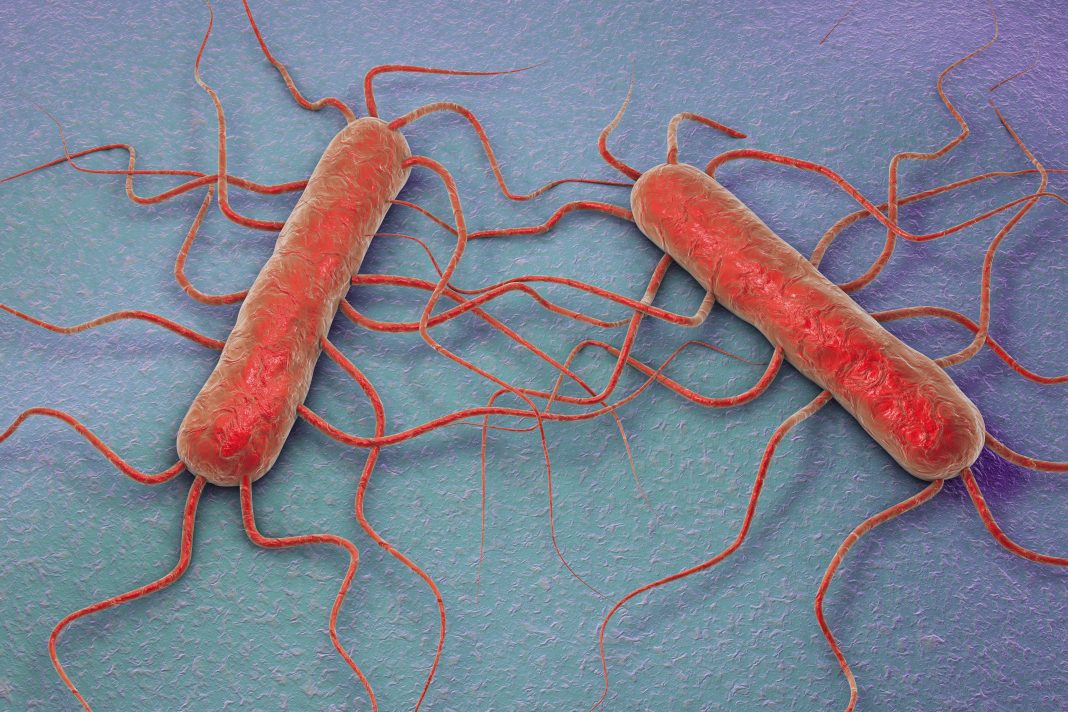Scientists from VIB-UGent Center for Medical Biotechnology, the University of Iowa, and other collaborators, say they have developed a new approach to better understand a basic defense mechanism of our immune systems. Central is ISG15, a small protein.
With the newly developed method, researchers can now identify, and study proteins tagged with ISG15, allowing them to unravel its many functions in fighting disease, potentially leading to novel antimicrobial drugs. The study (“The in vivo ISGylome links ISG15 to metabolic pathways and autophagy upon Listeria monocytogenes infection”) appears in Nature Communications.
To keep control of expressed proteins, cells can attach a chemical “tag” onto a protein to modify its activity. One of the most well-known protein modifications is a small protein called ubiquitin. First discovered as a label to tag a protein for degradation, ubiquitin is now known to have various functions. The labs of Francis Impens, PhD, expert technologist at the VIB-UGent Center for Medical Biotechnology and Lilliana Radoshevich, PhD, assistant professor of microbiology and immunology at the University of Iowa, investigated an ubiquitin-like modification called ISG15. Like ubiquitin, ISG15 can be attached to target proteins. However, the molecular function of ISG15 is elusive, since the identity of the modified proteins and their exact sites of modification are still unknown.
“ISG15 is an interferon-stimulated, ubiquitin-like protein, with anti-viral and anti-bacterial activity. Here, we map the endogenous in vivo ISGylome in the liver following Listeria monocytogenes infection by combining murine models of reduced or enhanced ISGylation with quantitative proteomics. Our method identifies 930 ISG15 sites in 434 proteins and also detects changes in the host ubiquitylome. The ISGylated targets are enriched in proteins which alter cellular metabolic processes, including upstream modulators of the catabolic and antibacterial pathway of autophagy,” the investigators wrote.
“Computational analysis of substrate structures reveals that a number of ISG15 modifications occur at catalytic sites or dimerization interfaces of enzymes. Finally, we demonstrate that animals and cells with enhanced ISGylation have increased basal and infection-induced autophagy through the modification of mTOR, WIPI2, AMBRA1, and RAB7. Taken together, these findings describe a role of ISGylation to temporally reprogram organismal metabolism following infection through direct modification of a subset of enzymes in the liver.”
According to Impens, “ISG15 and ubiquitin share the same amino acid sequence at their end, exactly where these modifiers are attached to target proteins. As a result, the peptides derived from the proteins modified by ISG15 display the same tag as peptides derived from proteins modified by ubiquitin. So, we took advantage of the technology developed to identify ubiquitin modification sites for the identification of ISG15 modification sites.”
Unlike ubiquitin, ISG15 is absent under normal conditions. ISG15 is only expressed upon stresses such as a viral or bacterial infection. Thus, they had to complement their approach with an infection model. Radoshevich infected mice with Listeria and the livers of these animals were analyzed for ISG15 by Impens with the tools developed to study ubiquitin modification sites.
Fabien Thery, a PhD student from the Impens lab and co-first author of the study, explained that, “As an infection model, we chose the bug Listeria monocytogenes. Leading to the ‘old French cheese disease’, Listeria is a food-born bacterial pathogen hiding from the immune system inside host cells.”
“The liver is a very interesting organ: it is a central player in the metabolism, but it also acts as a blood filter to sense and remove any potential threats such as viruses and bacteria,” added Yifeng Zhang, a graduate research assistant and co-first author from the Radoshevich lab.
Together, both labs report for the first time the discovery of nearly a thousand ISG15 sites.
“We found that ISG15 targets numerous enzymes involved in metabolic processes, but also that it targets key regulators of autophagy, a process in response to a lack of nutrients inside a cell,” said Radoshevich. “It leads to the destruction of cellular components to generate new sources of energy and promote cell survival. Alternatively, autophagy can be used as an antibacterial strategy. Our finding that ISG15 modulates this process is most exciting.”
This work revealed a new link between ISG15, cellular metabolism, and autophagy. The authors have already started to use their approach to investigate ISG15 targets during infection with other pathogens such as influenza virus or Coxsackie virus. Together, these studies may reveal antimicrobial pathways of our immune system that can be exploited to design new drugs.







